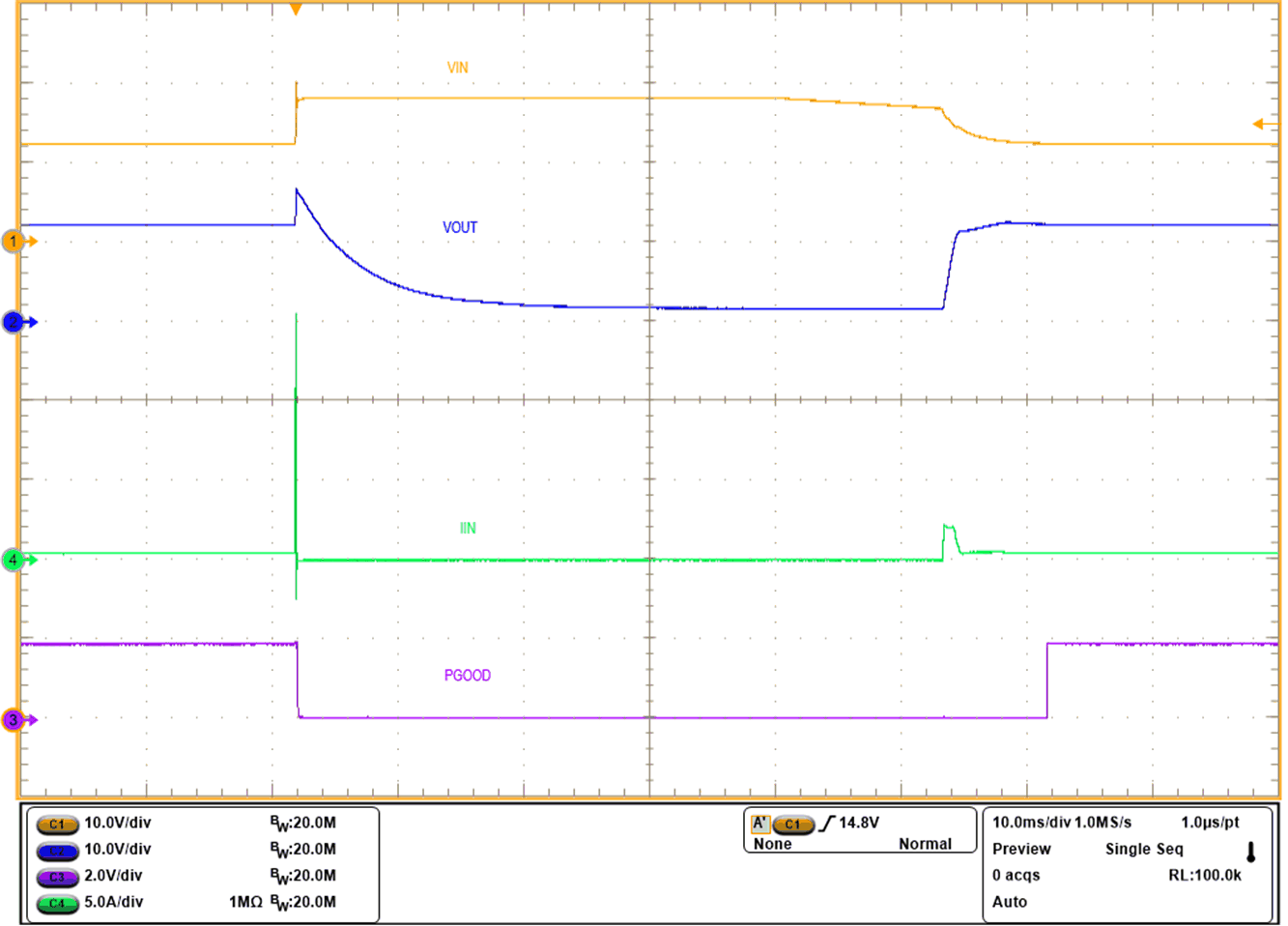SLUUCW7 july 2023 TPS25983
2.3.5 Overvoltage Cut-off Test
Use the following instructions to perform overvoltage protection test.
- Remove input TVS diodes.
- Set the input supply voltage VIN to 12 V and current limit of 5 A. Apply the supply between input connectors J1 and J3 and enable the power supply.
- Set the load resistance to 24 Ω and connect between VOUT and GND.
- Increase the input supply VIN from 12 V to 18 V and observe the waveforms using an oscilloscope.
Figure 3-6 shows over voltage response of TPS25983 on TPS25983EVM eFuse Evaluation Board.
 Figure 2-6 Over Voltage Protection Response of TPS25983 Device
Figure 2-6 Over Voltage Protection Response of TPS25983 Device